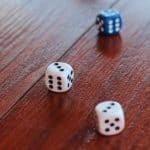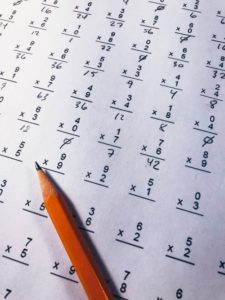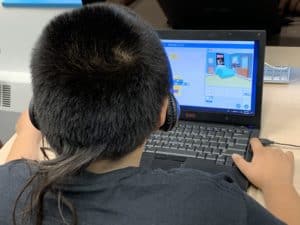Section Navigation
Introduction
This module teaches students basic computer skills through the creation of a board game using an online template. Students will become familiar with using Google to search for images, and uploading images to their board game.
Learning Goals
The goal of this module is for students to create a board game, print it out and share it with one another.
Vocabulary
Online - connected by computer to one or more computers or networks, as through a commercial electronic information service or the Internet.
Upload - to transfer software, data, images or files to a program on a computer.
Player - a person that takes part in a game or sport.
Traditional Games - historical competitive or playful games which Indigenous nations played in community or sometimes incorporated into ceremonial practices.
Guiding Questions
- What types of board games do you like to play at home?
- What is your favourite board game?
- Why is it important to choose appropriate images when making a game?
- What rules would you put in your game to make sure that it is fair for every player?
Curriculum Links
This module provides an opportunity to address curriculum expectations in Computer Studies, Character Education, Art, Media Studies and Indigenous Studies. Students will be introduced to what is involved in the creation of a board game, from the idea process, the art and visuals needed, as well as technical requirements. This lesson is geared to students in Grades 3–6.
Materials
- Game Board Template – Visit Website
- Playing Card Template (print out at least two sheets per student) – Download Assets Folder (ZIP)
- Computers
- Paper and markers or coloured pencils
- Scissors
- Dice and/or playing pieces
Non-Computer Activity
Bring out a variety of board games for the students to examine and play with. Some good examples include Snakes and Ladders, Yahtzee, Life, and Monopoly. Allow the students some time to play with the different games, encouraging them to keep a critical, observant eye while they play. In small groups, have the students discuss what makes a good board game. What does a board game need in terms of game pieces, timers, etc. Talk about the different rules and why they are needed, if they are good or helpful, or if they would change the rules. Let this lead into some brainstorming time of what they would like for their own game.
Computer Activity
Create Your Own Board Game
- Begin by opening the Game Board template website.
- Students can select a text-only option or customize an existing theme.
- For an image game board, students can search Google for pictures with which to decorate their game.
- Another option is to print out the playing card template, and have students create their own trivia questions. In the Additional Resources section of this document is a link to Indigenous Canadian Historical facts that students can use to create their trivia cards. Older students can use this information to create their own questions and write the answer on the bottom of the card.
- Once students have finished setting up their game board online, they can print it out, and finalize it with colour and any other decorations they wish to add.
- Have students type out or write down the rules for their game.
Conclusion
In small groups allow students to play each other’s games. Then, in a constructive manner, offer feedback about what worked, and what could be refined. If time permits, students can refine and improve their games and play them again.
Resources
- Game Board Template
- LiveLearn.ca Indigenous trivia
- Quiz about Canadian Indigenous history
- 10 Questions to get you ready for National Aboriginal Day
- Indigenous history in Canada



